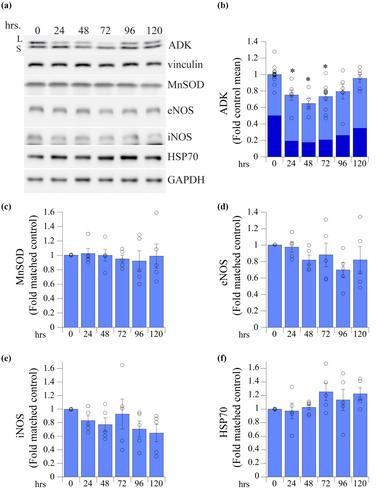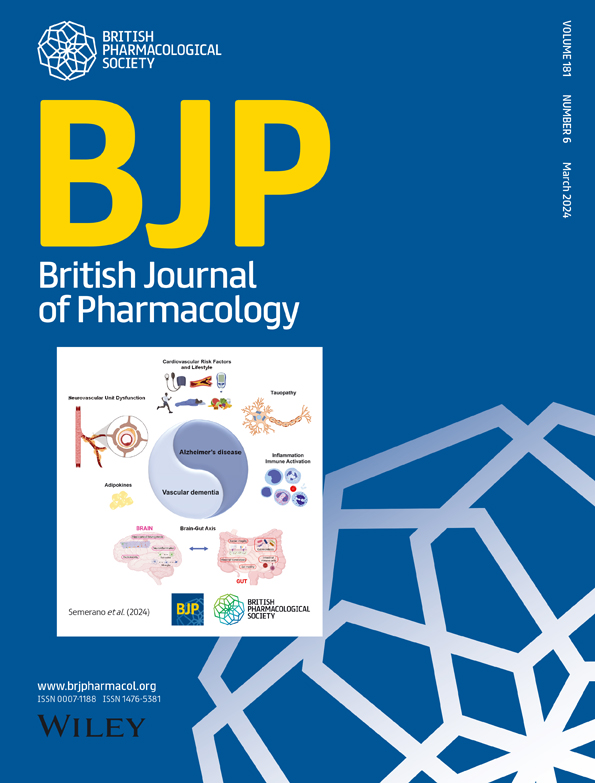An adenosinergic positive feedback loop extends pharmacological cardioprotection duration
Abstract
Background and Purpose
Adenosine receptor activation induces delayed, sustained cardioprotection against ischaemia–reperfusion (IR) injury (24–72 h), but the mechanisms underlying extended cardioprotection duration remain unresolved. We hypothesized that a positive feedback loop involving adenosine receptor-induced proteasomal degradation of adenosine kinase (ADK) and decreased myocardial adenosine metabolism extends the duration of cardioprotection.
Experimental Approach
Mice were administered an ADK inhibitor, ABT-702, to induce endogenous adenosine signalling. Cardiac ADK protein and mRNA levels were analysed 24–120 h later. Theophylline or bortezomib was administered 24 h after ABT-702 to examine the late roles of adenosine receptors or proteasomal activity, respectively, in ADK expression and cardioprotection at 72 h. Coronary flow and IR tolerance were analysed by Langendorff technique. The potential for continuous adenosinergic cardioprotection was examined using heterozygous, cardiac-specific ADK KO (cADK+/−) mice. Cardiac ADK expression was also examined after A1 or A3 receptor agonist, phenylephrine, lipopolysaccharide or sildenafil administration.
Key results
ABT-702 treatment decreased ADK protein content and provided cardioprotection from 24 to 72 h. ADK mRNA upregulation restored ADK protein after 96–120 h. Adenosine receptor or proteasome inhibition at 24 h reversed ABT-702-induced ADK protein deficit and cardioprotection at 72 h. cADK+/− hearts exhibited continuous cardioprotection. Diverse preconditioning agents also diminished cardiac ADK protein expression.
Conclusion and Implications
A positive feedback loop driven by adenosine receptor-induced ADK degradation and renewed adenosine signalling extends the duration of cardioprotection by ABT-702 and possibly other preconditioning agents. The therapeutic potential of continuous adenosinergic cardioprotection is demonstrated in cADK+/− hearts.


 求助内容:
求助内容: 应助结果提醒方式:
应助结果提醒方式:


